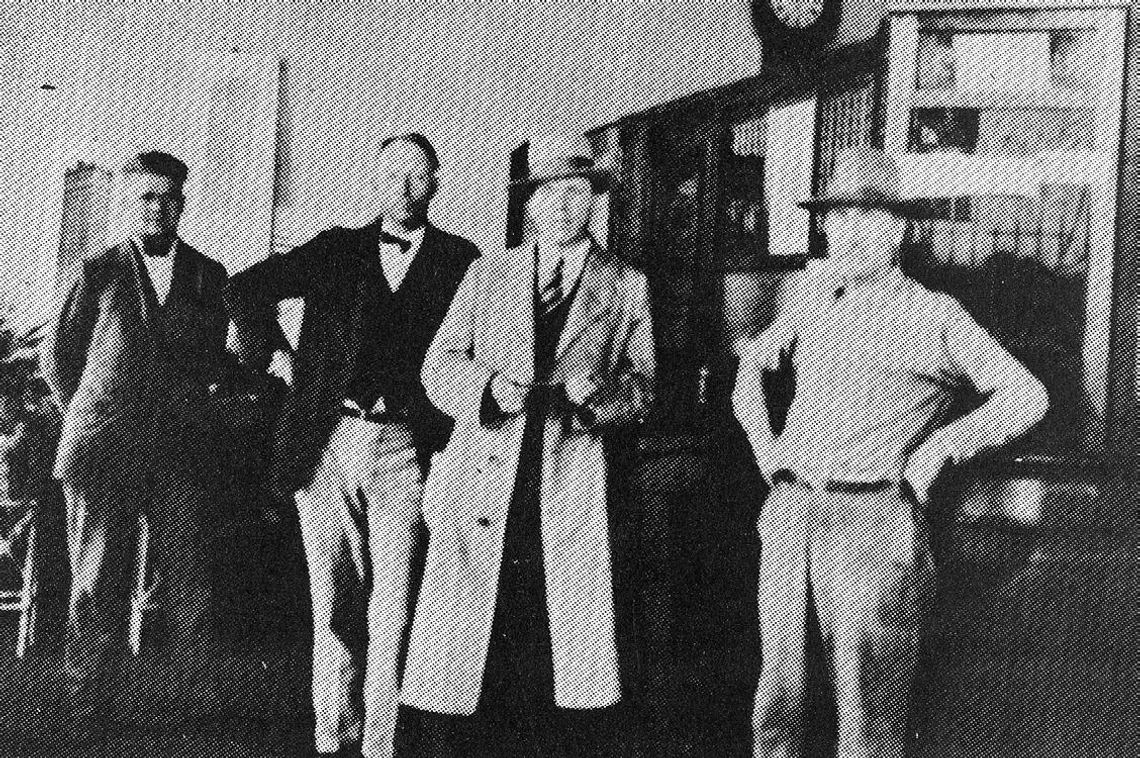Mankind seems to possess some inner desire that makes him want to seek out the forbidden fruit, and then reach to grab it, never mind the method or the cost. This certainly holds true in business and banking. This article will examine some of the creative methods used by some of the creative people to withdraw money from Fayette County banking institutions in which they did not actually have an account. In plain ol’ terms, we are speaking of bank robberies.
Before we examine the local cases of these bank robberies, the writer will give a list of just some of the bank robberies or attempted robberies that were mentioned in articles in the old La Grange Journal newspapers from the 1920s through the 1930s. Some of these towns include Buda State Bank-1929, Garwood State Bank, a bank in Houston, and in San Antonio- 1934, Hallettsville Bank-1939, Industry State Bank-1939, and of course, the most interesting and deadly, when “Santa Claus” tried to rob the bank in Cisco, Texas in December 1927.
Now, let us examine Fayette County’s contribution to this banking dilemma. First, in an article in the August 15, 1929, issue of the La Grange Journal we learn: “Sheriff (Will) Loessin was advised Tuesday morning that some party or parties had entered the Carmine State Bank in Carmine at some time during Monday night, and immediately left town for a thorough investigation. He returned just before noon and reported that an entrance to the banking house had been made by the burglars breaking the window glass near to a latch and by reaching in and unlocking the latch.” Upon examination by the bank employees and the sheriff, it was determined that the only items missing were some checks that had been cashed, the vault having been left undisturbed. The checks were on local banks and ranged from $1.02 to $100.00.
Law officers around the state were directed to let other banks know not to cash these checks. (It should be noted here that during this time period, the rural banks and businesses did not have video surveillance cameras or alarm systems, nor did law enforcement have modern-day tools such as computer technology and DNA.)
The Carmine State Bank was apparently quite a popular stopping- off place for bank robbers. Two articles found in the Footprints of Fayette archives are available online, using the Fayette County TXGenweb website as your place to begin the search. One occurred on November 9, 1932, and another occurred on January 11, 1933. Both of the articles give the details of the robberies and the fateful ending of those involved.
In a December 12, 1929, article in the La Grange Journal, it was reported that “four bank robbers visited Winchester Sunday night or early Monday morning…and made an attempt to get the bank’s money, but were interrupted in their work, and after firing two shots at the Constable—Paul Hendrick— left in their truck on the road to Giddings.” A local man, Paul Kaiser, had phoned Constable Hendrick after hearing the robbers at work. It was reported that the robbers had entered through a rear window and “managed to chisel a hole in the brick vault about two feet wide and fourteen inches high, took the vault doors off and sawed off the handle of the safe, and then rolled it to the back door of the (bank) building. They were all set to hoist the safe to the bed of the truck when…the Constable interfered.” Sheriff Loessin, and law officials in Giddings, Smithville, and Austin were contacted, along with other parts of the state.
The article noted that the burglars, “in their haste to get away, left a hammerless shotgun, a hacksaw, an electric torch, and the hoisting frame.” The writer of the newspaper article noted that, obviously, afterwards, the bank became the site of many local visitors, each wanting to see the damage done and help in the investigation.
The writer of this Footprints article, in a conversation with a former Texas Department of Corrections (Prison System) employee, was told that the prison system was sometimes used as a training ground for future crime. He used the term “crime college” for this practice. He spoke of watching an inmate open a Master Lock with a simple paper clip, and overheard the inmates speak of communities with easy places to break into and rob. Hence, the revolving door of repeat offenders who refuse to “follow the rules.”
Next week, more banking problems in Fayette County.
Sources: La Grange Journal



